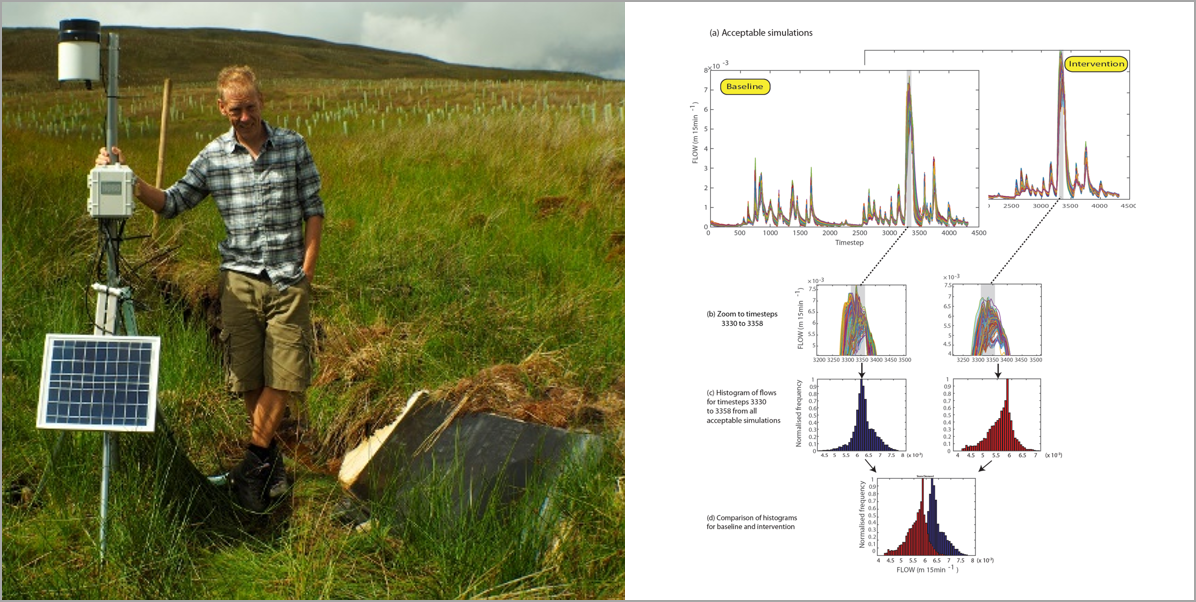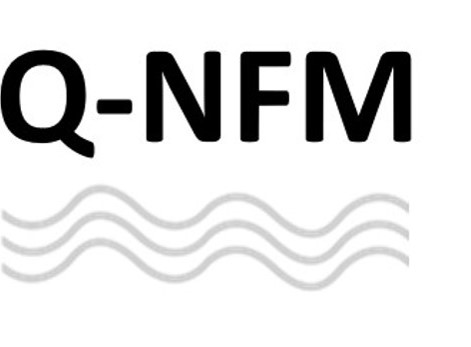NERC Quantifying the likely magnitude of nature-based flood mitigation effects across large catchments (Q-NFM)
Project duration: 1st Nov 2017 to 31st Mar 2023 (outputs continue in 2024)
Grant: NERC NE/R004722/1
Nick Chappell (PI), Keith Beven, John Quinton, Rob Lamb, Phil Haygarth, Trevor Page, Peter Metcalfe, Ann Kretzschmar, Paul Smith, David Mindham (Lancaster University), David Johnson (Rivers Trust subcontract) and Barry Hankin (JBA subcontract)
How much can natural measures reduce flooding at large scales? To answer this question the Q-NFM investigator team worked particularly in three large Cumbrian catchments ('test basins'), the Eden, Derwent and Kent (see Task 3) with their partners who are delivering NFM interventions (see Task 7). The project had seven tasks that built a scientifically credible, shared understanding of the role that Natural Flood Management (NFM) can play in reducing flood risk in the UK and locally in Cumbria (the primary test region). Task 7 relied on the expertise and experience gained by partner organisations and both informed Task 4-6 modelling and provided a means of sharing findings from across the project.

Q-NFM micro-basin flume @ Fellgill Sike with Woodland Trust partner together with ensemble simulations from earlier Life-IP development project
We had seven objectives:
Objective 1: To develop Catchment-Change-Databases (CCDs) summarising the experimental evidence on NFM-relevant changes in key hydrological parameters and variables in the UK context (see e.g., Page et al., 2020). The underlying systematic review of the primary literature identified critical evidence gaps partly addressed with the experimental programme. Moreover these change data have been associated with confidence-weights based on data quality, evidence-strength, transferability etc. so that they could be incorporated into our modelling framework
Objective 2: To establish a network of experimental sites (paired-plots and micro-basins) to allow us to constrain spatially-explicit model estimates (using observed soil-moisture and flows) across the large test basins in Cumbria (see e.g., Wallace and Chappell, 2019; Mindham et al., 2022); to evaluate the relationship between effective-model-parameters and plot-measured parameters; to address critical gaps in parameter-change-data (supplementing the CCDs); and demonstrate local NFM-benefits to local stakeholders.
Objective 3: To demonstrate that our key modelling tool, Dynamic-Topmodel, is able to simulate observed-sequences of flood-events (and low-flows) in a physically reasonable way and to identify a baseline ensemble of acceptable simulations representing simulation uncertainties (see e.g., Beven et al., 2022a).
Objective 4: To utilise the CCDs with weighted-evidence on NFM-related shifts in model-parameters for multiple scenarios to re-run the acceptable simulations of observed sequences of flood-events and event sets (see e.g., Beven et al., 2022b). The central objective has been to demonstrate the likely magnitude of effect of NFM-interventions across 3 large test catchments.
Objective 5: To define sets of NFM scenarios for simulations across 3 large test catchments (see e.g., Hankin et al., 2021b).
Objective 6: To quantify NFM system performance, including risk of NFM failure and temporal changes in NFM feature effectiveness (see e.g., Hankin et al., 2020b).
Objective 7: To co-develop with partners scenarios of NFM extent and preferred location, translate complex environmental science into practice (see e.g., Chappell and Beven, 2024), and provide the basis for partner-developed national NFM mapping.


News
Q-NFM team contribute to report on Green Financing NFM published on 20 March 2024
NERC Q-NFM Finale presentation 7 July 2022
NERC Q-NFM programme starts on 1 Nov 2017
The Principal Investigator wishes to thank all members of the Q-NFM investigator team for your enormous efforts in delivering the project.
Further, the Q-NFM investigators are extremely grateful to the NERC NFM Secretariat (most notably Dr Ruth Kelman and Daniel Knight) and NFM Programme Executive Board for your generous support throughout the programme, and to investigators within our partner projects Landwise and ProtectNFM for the rewarding opportunity to work with you. We are equally appreciative of the technical and practical inputs of our end-user partners in Cumbria and across the UK, without whom we could not have delivered our NERC science.
